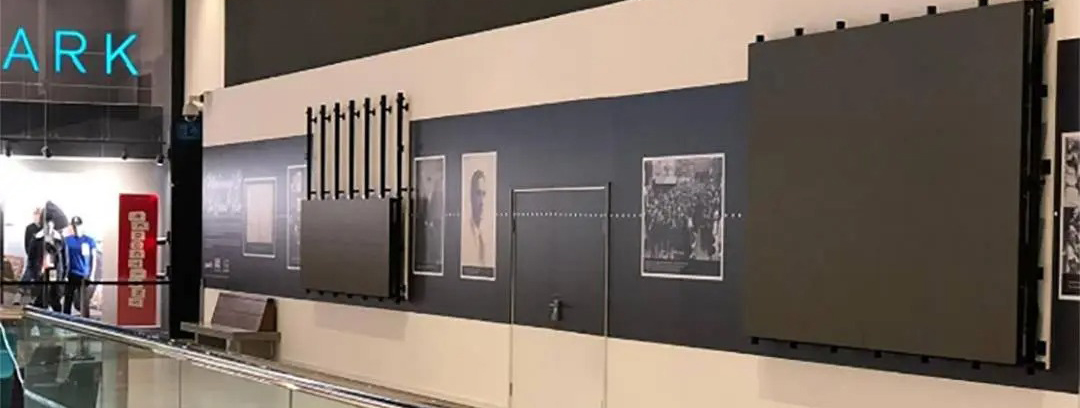1. Why Maintenance Methods Matter
P3.91 LED displays are widely used in dynamic environments such as stage performances, corporate conferences, retail advertising, and houses of worship. Their versatility demands reliable performance, but equally critical is the choice of front maintenance or rear maintenance solutions. This decision impacts installation flexibility, long-term usability, and total ownership costs. Understanding the differences between these two approaches ensures optimal functionality tailored to your specific needs.
2. Structural Differences: Front vs. Rear Maintenance
1. Front Maintenance P3.91 LED Display
Front-maintainable LED displays are designed for accessibility from the screen’s front side. Key components—including modules, control cards, and power supplies—can be removed or replaced without accessing the back of the display. This design is ideal for installations where space is limited, such as wall-mounted or embedded setups. Structural features often include magnetic module attachments or tool-free fasteners to simplify access.
2. Rear Maintenance P3.91 LED Screen
Rear-maintainable displays require a dedicated service corridor behind the screen. Technicians access components by removing rear panels or opening cabinet doors. This design suits large-scale installations like stage backdrops or outdoor billboards, where ample space is available. The simpler cabinet structure reduces upfront complexity but demands sufficient rear clearance (typically ≥60 cm).

3. Operational Comparison
| Factor | Front Maintenance | Rear Maintenance |
| Access Method | Modules/power supplies slid out from the front | Rear cabinet panels opened for component access |
| Space Requirements | Zero rear clearance; ideal for wall mounting | Requires ≥60 cm rear space |
| Repair Speed | Faster; single operator can replace modules | Slower; often requires team coordination |
| Typical Use Cases | Indoor venues, narrow spaces, fixed displays | Large stages, outdoor billboards, rental setups |
4. Technical Considerations
4.1 Cabinet Design Complexity
Front maintenance systems require reinforced magnetic modules or slide-out trays, increasing manufacturing costs.
Rear maintenance cabinets prioritize straightforward, modular designs with fewer specialized components.
4.2 Cable Management
Front-maintained displays demand precise cable routing to avoid tangling during module extraction.
Rear systems allow more flexible wiring but may require longer cables for rear access.
4.3 Durability Concerns
Frequent front module removal may strain connectors over time. High-quality brands mitigate this with robust interfaces.
Rear systems experience less physical wear but require dust/weatherproofing for outdoor use.

5. LED Display Maintenance Cost Analysis
Upfront Costs
Front maintenance displays cost 8–15% more due to specialized components like magnetic modules.
Rear maintenance cabinets use standardized parts, offering better cost efficiency.
Installation & Labor
Front systems save time and labor in space-constrained areas (e.g., shopping malls).
Rear installations require structural planning for service corridors, increasing setup complexity.
Total Cost of Ownership (TCO)
Front maintenance excels in compact indoor settings by minimizing spatial and labor expenses.
Rear maintenance proves economical for large-scale projects with accessible rear areas.
6. Choosing the Right P3.91 LED Display Solution
Consider three factors:
Space Constraints: Wall-mounted or embedded? Opt for front maintenance. Open outdoor areas? Choose rear.
Maintenance Frequency: High-turnover rental displays benefit from front-access speed.
Budget: Balance initial investment with long-term operational costs.
7. Conclusion
Front and rear maintenance each offer distinct advantages. Front maintenance prioritizes space efficiency and rapid repairs, while rear maintenance suits large installations with robust infrastructure. When investing in a P3.91 LED display, partner with experienced manufacturers (e.g., RTLED) to align technical specifications with your operational needs. A well-informed choice ensures longevity, cost savings, and seamless performance.
Post time: May-23-2025





